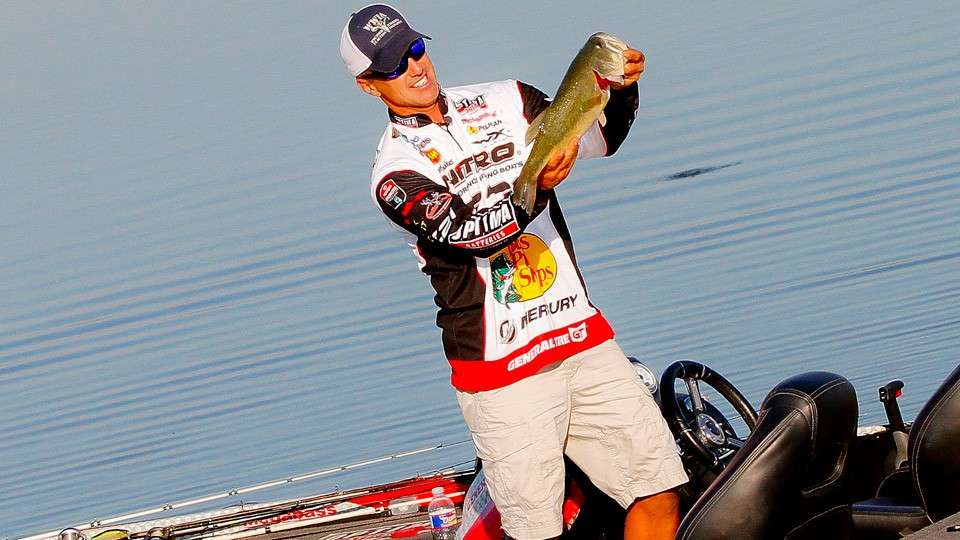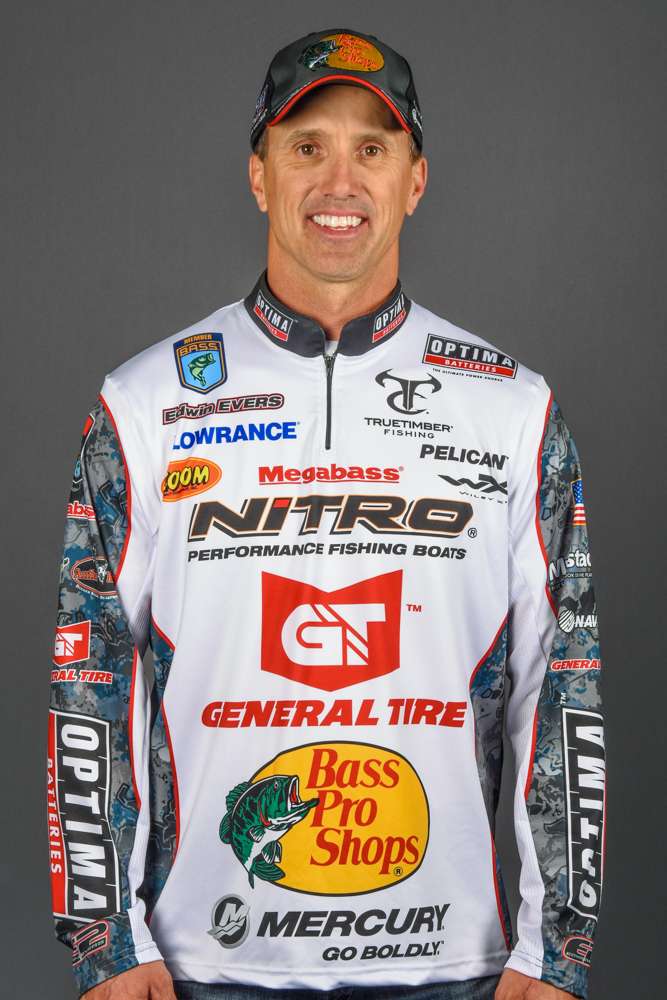
August may be the “dog days,” but it’s also the perfect time to fish shallow for bass.
And when I say “shallow,” I mean “dirt shallow” — 3 feet and less. That’s where I catch most of my hot summertime bass, including the biggest ones.
In my experience, bass go their deepest right after they spawn, and they’re at about their shallowest now. By the end of August, they’ll start to scatter in search of the best water quality they can find. It could be in a foot of water or 25 feet of water. For now, though, think shallow.
There are a couple of reasons why bass are so shallow now. The first is oxygen. With wave and boat action, oxygen levels are often much better in the extreme shallows than anywhere else. The second reason is food. Most of a bass’ food is found in the shallows, and that’s especially true in summer when bluegill can often be found spawning in just a foot or two of water.
So, in August, you’ll find me focused on water 3 feet deep and less. My go-to baits for this time of year have a couple of things in common. First, they cover shallow water quickly and efficiently. Second, they’re subtler than the baits most other anglers use.
A 1/4-ounce War Eagle Buzzbait in black (dirty water or low-light conditions) or white (clear water or bright conditions) with a gold blade is one of my favorite summertime lures. I like a smaller buzzbait now because I can fish it fast without creating too much disturbance. I want to draw strikes, but I’m not trying to pull bass from deeper water. The 1/4-model is perfect for this.
My next bait is a 1/2-ounce Nature Jig (green) from Andy’s Custom Bass Lures. I add a green pumpkin trailer to the jig (either a Zoom Super Chunk or Zoom Speed Craw) and dip the tail in chartreuse JJ’s Magic Dippin’ Dye to make it look more like a bluegill. The swim jig is great around shallow cover. It has less flash than a spinnerbait and less vibration than a bladed jig and is just right for skittish summer bass.
The third lure is a Megabass S Crank 1.5 in Secret Gill (clear water) or Biwako See Through Chart (dirty water). Unlike most square-billed crankbaits, the S Crank doesn’t have a rattle so it’s a lot less obtrusive in the shallows.
As you can see, I want my baits to cover water but not create as much disturbance as the lures most anglers are throwing. By August, bass have seen (and heard) a lot of different lures. Being quieter and more subdued can make a big difference.
But it’s not just the lures. It’s important that the angler be quieter, too. That’s why I cut off my outboard well before I get to an area I want to fish. It’s why I use my trolling motor on a lower speed, turn off all my electronics, run my aerator continuously (it’s better than having it turne on and off periodically) and make extra-long casts. These measures might seem extreme, but they’ll make a big difference to your fishing.
The best places to target at this time are the shallows with some cover — stumps, grass or other vegetation, boat docks, overhanging trees, rocks and anything else that casts a shadow. Current makes a huge difference, too, because it oxygenates the water. Look for areas exposed to the wind. Waves crashing on a bank at this time of year is a pretty good indicator that bass will be in the area.
So while your buddies are cranking ledges or dragging worms across humps, give the banks a try and fish super shallow. It’s fun and very productive. Just remember that if your trolling motor isn’t stirring up mud, you’re probably fishing too deep.
I hope you’re keeping up with the Healing Heroes in Action Tour where Bassmaster Elite Series pros and I take wounded veterans and donors to the program fishing. It supports a great cause (Wounded Warriors in Action), and you can be a part of it. Check out my Facebook page for details, and find out more about our last tour stop.

